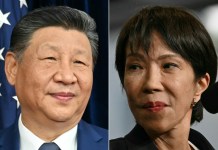Pakistan has secured a $6 billion bailout package from the International Monetary Fund (IMF) however, it won’t stop China from turning the country into the next Sri Lanka, writes Panos Mourdoukoutas for the Forbes.
Can Baloch Rebels Derail The Multi-Billion Dollar CPEC Project?
China-Pakistan relations are at its zenith as Islamabad is considered a “natural” ally in Beijing’s long-time endeavour to restrain India. The other reason is that Pakistan offers a “natural corridor” between western China and the Indian Ocean, and, therefore, an alternative route to Middle East oil supplies and the riches of Africa.
Forbes in its report states that is the reason why Beijing has been assisting Pakistan to build the China Pakistan Economic Corridor (CPEC), which stretches from Western China to the Indian Ocean.
While CPEC primarily benefits China, this project also helps Pakistan. It’s a big leap forward, as the country strives to transition from an emerging to a mature economy, creating a lot of jobs in the process. But China’s involvement in the project hurts Pakistan, too. It adds to Pakistan’s corruption since it involves state-owned companies on both sides of the partnership. Meanwhile, corruption keeps pushing the costs of the project higher by the day, writes the Forbes.
As of 2019, the cost of CPEC projects is $62 billion, up from the original value of $46 billion back in 2014. And that makes Pakistan more indebted to China, which has been financing the project. In fact, Pakistan’s external debt took off shortly after CPEC was launched.
Growing indebtedness comes at a time when the country is already living beyond its means, as evidenced by persistent current account deficits, government debt, and external debt.
India, Japan To Develop Port in Sri-Lanka To Counter Chinese Presence
Pakistan’s external debt jumped to 105841 USD Million in the first quarter of 2019 from 99086 USD Million in the fourth quarter of 2018. The country’s external debt averaged 53029.34 USD Million from 2002 until 2017, reaching an all-time high of 88891 USD million in the fourth quarter of 2017 and a record low of 33172 USD million in the third quarter of 2004. Meanwhile, Pakistan’s foreign currency reserves and foreign capital flows have been falling rapidly.
That’s why the country had to appeal to China and Saudi Arabia for loans to deal with the situation. But these funds haven’t been adequate to reduce Pakistan’s Current Account crisis so the country had to appeal to IMF for the $6 billion loan.
The concern is that the CPEC project is far from over, and the costs of completing the project keeps on rising. And that makes it very likely that Pakistan will have to reschedule its debt several times before it’s over and share the same fate with Sri Lanka — bartering debt with equity, which in essence will hand CPEC to Beijing.
That’s the model China used in rescheduling Sri Lanka’s debt, turning the country’s Hambantota port officially into China’s own port, for 99 years. A milestone deal signed early last year gives China Merchants Ports Holdings—an arm of the Chinese government—70% stake in the Indian Ocean’s prominent outpost.
Like CPEC, the Hambantota port construction began with loans from China. But when Sri Lanka could not repay the loans, Beijing converted these loans to equity, in essence turning Sri Lanka into a “semi-colony,” in a subtle way. That’s what will eventually happen to Pakistan when China assumes ownership and control of CPEC, and collect tolls from vehicles that pass through.
Originally Published By The Forbes




